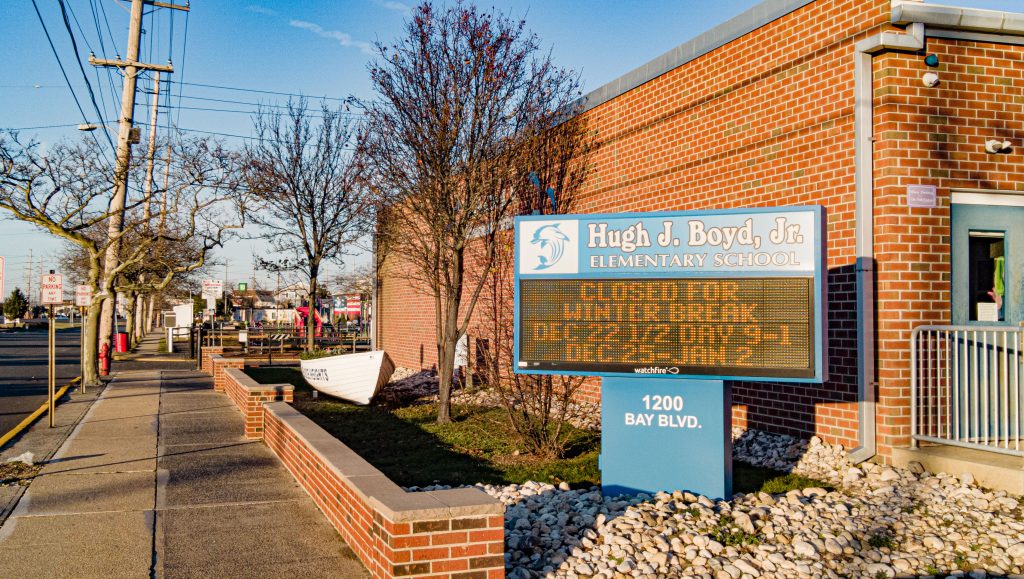Despite legal notices having been published in anticipation of a referendum on a merger of the Seaside Heights and Toms River Regional school districts, a vote will not be held March 12.
The date of the vote, which has been the subject of mailers and a letter-writing campaign, was caught up in a “perfect storm” of a holiday weekend and the departure of the state’s education commissioner, who must approve such referenda. Officials are now hoping a vote can be held April 16, however a bill recently signed into law by Gov. Phil Murphy limits April school elections to districts that are exceeding spending caps – not asking general referendum questions. William Burns, the Toms River Regional school board attorney, has asked Acting Education Commissioner Kevin Dehmer for an exception. The next authorized date for a referendum would come Sept. 26 or on the date of the general election in November.
There was also chatter that the Central Regional school district – which is poised to lose the funding that comes with Seaside Heights students attending schools there – could formally oppose an April vote under the new law.
Behind the scenes, officials have been discussing compromises on the matter separate from the date of the vote. Michael Citta, superintendent of Toms River Regional, has opened the door for the Hugh J. Boyd Elementary School in Seaside Heights to remain open for five years as long as a minimum student population is maintained.
“Mike Citta has gone out of his way to work a process out that will meet the number and make it work,” said Seaside Heights Mayor Anthony Vaz, who himself was a schools superintendent in Middlesex County before retiring.
According to Vaz, the plan calls for the Boyd school to remain open for a maximum of five more years as long as 125 students are attending school there.
“The school would close after five years under the new plan,” said Vaz. “As long as there are 125 kids, it will stay open. If it goes below that number, the school would have to close the next year.”
A revised plan could also see the TRRS school board grow to an 11-member body, with Toms River gaining an additional representative alongside Seaside Heights.
Currently, the Boyd school educates students from pre-school through sixth grade. In seventh grade, students move to the Central Regional school district, which is located 18 miles away from town. Conversely, East Dover Elementary School is 5.6-miles from Seaside Heights and can be reached in about nine minutes by car.
It is expected that teachers at the Boyd school, rallied by the New Jersey Education Association, are due to speak on behalf of keeping the school open at a borough council meeting scheduled for Wednesday. Regardless of the which way the referendum vote eventually turns out, however, it is not expected that any teachers will lose their jobs. All will be retained as employees of Toms River Regional, with Seaside Heights students primarily attending either East Dover Elementary School or, if necessary, a campus that meets special needs of some students.
Seaside Heights has historically been home to a significant transient population in its K-6 school district, with a large number of students coming from families where English is not the language spoken at home. It has been suggested that Toms River Regional, one of the state’s largest districts, has more resources to educate students in English classes as well as other special education programming to which they may be entitled.
Consultants hired to perform the study noted that Seaside Heights’ student population has been historically transient with a large number of students who require English language curriculum and other special services. These services, the initial study said, could be delivered with better results in the larger TRRS district with more resources and programs at its disposal.
Mary Robinson-Cohen, a former teacher and Roosevelt Public School District superintendent who is also an attorney, was one of the consultants who led the study.
“In all of the state testing, unfortunately, the children were lagging behind,” said Cohen. “There were no categories where the children were advanced-proficient and in the other categories they were minimally proficient. … The children were, mainly, below proficient.”
More on the initial report can be found in Shorebeat’s original story published late last year.
Under a new state policy, Seaside Heights taxpayers would receive subsidies for 10 years in order to guarantee tax savings before becoming a full member of the regional district – not part of a tuition-based system. This has led to fears by some that, given the rising values of Seaside Heights properties, per-pupil costs to the borough could rise in year 11 based on the a tax equivalency formula. On the mainland, it is expected that all constituent districts within the regional system will receive some tax relief, and Toms River Regional could benefit from extra state funding that follows students and would help stem layoffs and other austerity measures brought on by seven years of state funding cuts.


Police, Fire & Courts
Toms River Police Catch Well-Known Suspect Attempting to Burglarize Vehicles

Police, Fire & Courts
Fatal Toms River Hit-and-Run Results in Charges Against Local Man, 68

Police, Fire & Courts
Foursome Accused of Dismembering Body Following Murder of Toms River Man









